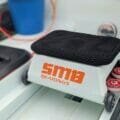There is an old proverb that goes: “The best time to plant a tree was 20 years ago. The second-best time is now.” This sentiment can be applied to the adoption of automation in the UK food and beverage production industry, which has traditionally lagged behind other markets. As food and drink manufacturing faces a new assortment of challenges in labour and productivity, Stephen Hayes, managing director of Beckhoff UK, explains why now is the best time to adopt automation.
In August 2021, a partnership of food supply chain organisations including the Food and Drink Federation (FDF) and the National Farmers Union (NFU) laid bare the scale of one of the UK food industry’s largest challenges: labour. In their labour availability report, the organisations painted a frank picture of an industry seemingly headed for breaking point.
The report’s executive summary synopsised: “Severe disruption in the availability of workers, impacted by the reduction in free movement of people coupled with the unprecedented disruption of the Covid-19 pandemic, has created a chronic labour shortage across the whole supply chain.” This shortage is exacerbating productivity challenges presented by the Covid-19 pandemic, while also rekindling a long-standing discussion around automation adoption of UK food and beverage manufacturers.
At the Appetite for Engineering event in September 2021, a spokesperson from the FDF stated that the UK’s food industry is lagging behind other nations in terms of automation usage. This is not a new problem; rather, it is one acknowledged many times in recent years.
A complex relationship
In 2010, an industry study led by the Engineering and Machinery Alliance (EAMA) highlighted the perception barriers affecting adoption across Europe. For UK manufacturers, the reluctance to invest in modern automation technologies was linked to a lack of knowledge, skills and confidence. The study prompted the UK Government to launch the Automating Manufacturing Programme, which accelerated engagement with automation by making more funding available.
The British Automation and Robotics Association (BARA) supported many UK industrial businesses in the wake of the programme rollout. This led to a 60 per cent increase in automation adoption in food and beverage manufacturing between 2010 and 2013.
However, the UK has since continued to reluctantly trail behind its international counterparts. A 2015 report by the Department for Business, Energy and Industrial Strategy (BEIS) established that Japan had 167 robots per every million hours worked, compared to 10 robots per million hours in the UK. This is only one type of automation, but it reflects a wider challenge that persists for UK industry.
Part of the challenge comes from the same barriers existing today that were identified in the EAMA survey in 2010. As more companies have started using broad terms such as Industry 4.0, the Industrial Internet of Things (IIoT) and digitalisation, more business leaders have perceived their companies to lack some of the knowledge and skills to make confident use of the technologies. Yet in reality, the fundamentals of control systems still form the backbone of automation technologies.
As August’s labour availability report identifies in its opening sentence: “The Food and Drink sector is currently battling a unique set of challenges that have coalesced to create fundamental labour shortages.” The limited use of automation has meant that, alongside this workforce shortage, the means of production are struggling to keep pace with production and supply requirements — which has serious ramifications both socially and economically.
Taking control
The revisiting of automation adoption for the past decade is important in informing why now is the best time for food business leaders to reconsider their relationship with automation. Not only are there large economic and industrial pressures that are making new processes, equipment and systems a vital factor in survival, but the technology itself is advancing to a point where the old barriers are falling.
At Beckhoff, one of the driving forces behind our product innovation has been to make automation more open and accessible to businesses. The open automation principle underpins the development of the TwinCAT 3 automation software package, which is designed for interoperability with industrial software and systems from any vendor or manufacturer. This focus on openness and accessibility has also informed software design and integrations.
For example, one important technology to rise in popularity among food manufacturers in the past decade is machine vision (MV). These systems can significantly improve quality assurance and motion application accuracy, but they traditionally require specialised technical staff to program, calibrate and maintain. That’s why Beckhoff developed TwinCAT Vision, an add-on to TwinCAT 3 that allows for quick and easy integration of MV. That means engineers can use the same programming language and familiar software environment to manage MV applications and streamline synchronisation with other motion control systems.
Modern automation technologies also continue to make new types of applications possible, allowing for an ever-increasing number of ways to improve process efficiency. For the past year, the Beckhoff UK team has worked closely with innovation teams to support the research and development of new machines that fulfil previously manual and time-intensive tasks.
Technologies like the first-of-its-kind XPlanar motion system are among those expanding the possibilities of automation. With its frictionless hygienic design, 360-degree jerk-free movement and 50 µm repeatability, XPlanar is proving itself invaluable for opening new opportunities for process innovation, from efficient material handling to automated beverage mixing.
Although the stakes may seem greater currently, there is no better time to adopt automation and move away from the “business as normal” approach that many have kept in place since 2010. The benefits of efficiency and productivity are the same, but the risk, cost, complexity and skill requirements are greatly reduced. The best time to begin adoption may have been 10 or 20 years ago, but that does not mean that today is too late.





